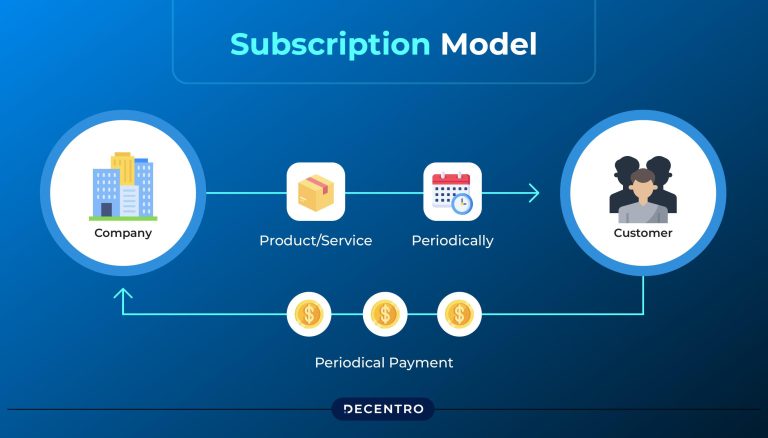Subscription-based business models are accelerating across industries, as companies from software and streaming to retail, automakers, and fitness lean into recurring revenue to offset volatile demand and rising customer-acquisition costs. Executives tout predictable cash flow and deeper customer relationships, while investors increasingly benchmark performance on annual recurring revenue and churn rather than one-off sales.
The shift, propelled by ubiquitous digital payments and the normalization of “access over ownership,” is reshaping pricing strategies and product design. Businesses are bundling services, adding tiered plans, and experimenting with micro-subscriptions to capture niche demand. Yet rapid growth is testing the limits of consumer tolerance: subscription fatigue, stricter data rules, and calls for easier cancellation are prompting scrutiny from regulators and watchdogs. As competition intensifies, the winners are likely to be those that balance convenience with transparency-and deliver persistent value that keeps subscribers from hitting “cancel.”
Table of Contents
- Recurring revenue surge shifts focus to churn control and lifetime value as investors reward predictability
- Leaders scale with personalization bundling and first party data to raise retention and cut acquisition costs
- Action plan for operators flexible pricing pause features simple cancellation onboarding that proves value and timely win back campaigns
- In Conclusion
Recurring revenue surge shifts focus to churn control and lifetime value as investors reward predictability
With recurring income swelling across sectors, leadership teams are pivoting from pure acquisition to the economics of keeping and growing customers, elevating churn control and lifetime value (LTV) as key scorecards; on the market side, investors are rewarding firms that demonstrate predictable revenues, resilient cohorts, and disciplined net revenue retention (NRR), pushing playbooks toward value realization post-sale, measured expansion, and clearer visibility on cash flow durability.
- What moves the multiple: consistently high NRR, stable gross retention, improving cohort profitability, and shorter CAC payback.
- Operational focus: data-led lifecycle management, outcome-based onboarding, and product cues that preempt downgrade risk.
- Monetization levers: value-based pricing, usage-informed tiers, annual prepay incentives, and thoughtful cross-sell sequencing.
- Risk watch: hidden churn via downgrades, discount dependency, low feature adoption, and acquisition-heavy growth mixes.
- Capital reallocation: bias spend toward retention and expansion motions, align quotas to net revenue, and sunset low-ROI channels.
Leaders scale with personalization bundling and first party data to raise retention and cut acquisition costs
Top performers in recurring-revenue markets are consolidating growth around three levers: precision recommendations that lift lifetime value, curated package deals that nudge multi-product adoption, and privacy-safe first‑party data pipelines that replace costly third-party targeting. Executives cite faster payback windows and steadier renewal curves as personalization fuels higher retention while smarter packaging trims trial-to-paid drop-off. With signal loss reshaping performance marketing, brands are shifting media spend to owned channels, deepening consent frameworks, and tightening analytics to compress acquisition costs without sacrificing scale.
- Personalized merchandising: session-level offers and content sequencing tied to predicted churn risk.
- Bundling and tiers: value-stacked plans that convert single-product users into multi-line subscribers.
- Data stewardship: consented first‑party and zero-party inputs powering modeling, measurement, and lifecycle messaging.
- Owned-channel activation: email, in-app, and push orchestration replacing high-CAC paid retargeting.
- Measurement rigor: incrementality tests and cohort analysis guiding promotion cadence and discount discipline.
Action plan for operators flexible pricing pause features simple cancellation onboarding that proves value and timely win back campaigns
As recurring revenue climbs, operators are deploying a concrete, regulation-conscious playbook to stabilize churn, protect ARPU, and strengthen customer trust across the first 90 days and beyond.
- Flexible pricing & packaging: Introduce usage-based tiers, regional pricing, and limited-time bundles; test anchored price points and value-add upsells to widen addressable demand without discount spirals.
- Pause instead of cancel: Offer one-click “holiday mode” with auto-resume, pro‑rated billing, and service-level downgrades to preserve tenure and reduce involuntary churn during cash-flow dips.
- Simple, compliant cancellation: Provide symmetrical sign‑up/exit flows, plain-language disclosures, and in‑flow save options (downgrade, pause, extend trial) that meet consumer‑protection standards.
- Onboarding that proves value fast: Trigger task-based checklists, personalized tips, and milestone nudges tied to first-use outcomes; surface ROI dashboards within the initial sessions to cement habit loops.
- Timely win‑back campaigns: Orchestrate lifecycle emails/SMS within 7-30 days post-cancel featuring personalized incentives, “return to saved settings,” and frictionless reactivation paths.
- Experimentation & measurement: Run controlled tests on offers and timing; track churn reason codes, pause-to-reactivation rates, and net revenue retention; pipe insights to pricing and product teams for rapid iteration.
In Conclusion
As subscription offerings proliferate across sectors-from software and media to retail and mobility-the model’s next phase will likely be defined less by raw sign-ups and more by durable unit economics. Executives and investors are increasingly focused on churn management, pricing discipline, and clearer paths to profitability, even as regulators scrutinize cancellation practices and disclosure standards.
Whether the recent surge proves resilient will depend on how providers balance growth with customer value amid shifting household budgets and higher capital costs. For now, subscriptions remain a central pillar of recurring-revenue strategies, but the advantage may accrue to firms that pair data-driven personalization with transparent terms and flexible tiers. In a market recalibrating for efficiency, the question is no longer how fast subscriptions can scale, but how effectively they can retain.


